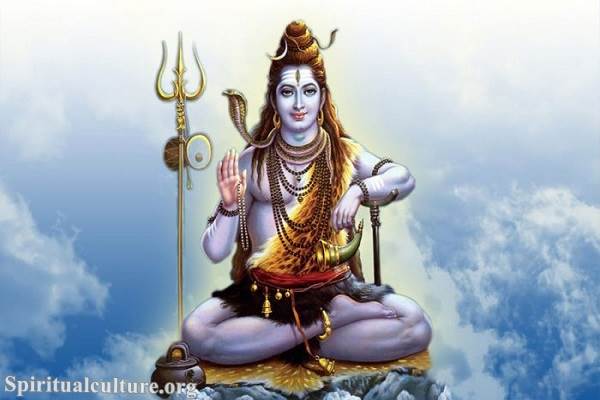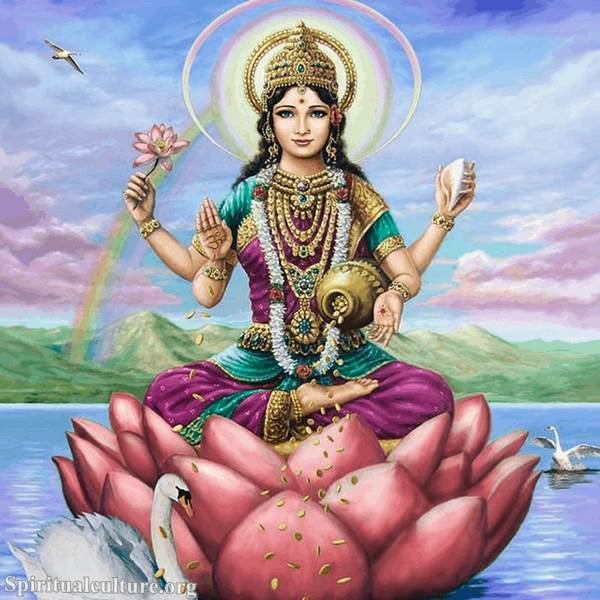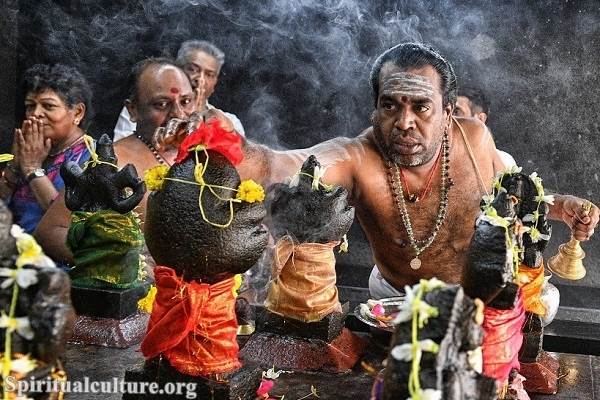Bhakti is not merely a spiritual concept — it is the heartbeat of Hinduism. It is the soul’s cry for the Divine, a love that seeks no reward but union. In an age where many seek meaning through achievement, knowledge, or ritual, bhakti offers something different — an intimate relationship with the sacred that transcends dogma.
In this article, Spiritual Culture invites you to explore the essence of bhakti: what it is, why it emerged as a transformative force in Indian spirituality, and how it continues to shape millions of lives today. More than a religious tradition, bhakti is a spiritual current — flowing through temples, poems, songs, and human hearts.
Let us walk this path of devotion together and rediscover the ancient, ever-living power of love as a way to the Divine.
What Does “Bhakti” Really Mean?
Bhakti as the Path of Loving Devotion
The Sanskrit word bhakti comes from the root bhaj, meaning “to share,” “to adore,” or “to participate in.” At its core, bhakti is a deep, personal devotion to a deity — a bond of love between the worshipper (bhakta) and the divine being, often seen in the form of Krishna, Rama, Shiva, Devi, or other manifestations.
But bhakti is not simply emotional worship. It is both a path (mārga) and a state of consciousness — an orientation of the heart toward God. It invites the seeker to surrender pride, ego, and attachment, and to fall into love that purifies, liberates, and transforms.
As the Bhagavad Gita declares:
“Bhaktyā mām abhijānāti yāvān yaś chāsmi tattvataḥ — Only by devotion can I be known in truth, as I am.”
(Bhagavad Gita 18.55)
Beyond Ritual: Bhakti as Relationship
In bhakti, the relationship with God becomes deeply personal — like that of a child to a parent, a friend to a friend, or a lover to the beloved. This is a radical departure from the purely formal or priestly approach to religion. Bhakti teaches that one need not be a scholar or renunciate to reach the Divine. A heart full of longing is enough.
The Historical Roots of Bhakti in Hinduism
The Rise of the Bhakti Movement
Though seeds of devotion are present in the Vedas and Upanishads, the bhakti movement began to blossom around the 6th century CE in South India, with the Alvars (devotees of Vishnu) and Nayanars (devotees of Shiva). These saints composed ecstatic hymns in Tamil — expressing love, grief, and yearning for the Divine — making spiritual life accessible beyond caste or education.
From the 12th century onward, this wave spread across India. Saints like:
- Mirabai (a Rajput princess devoted to Krishna),
- Tulsidas (composer of Ramcharitmanas),
- Kabir (a weaver-mystic who spoke of the Divine beyond religion),
- Chaitanya Mahaprabhu (who spread Krishna devotion in Bengal),
- and Namdev, Tukaram, Surdas, Andal, and others…
…created a new spiritual vocabulary: one of tears, songs, and longing — rather than sacrifices and rituals.
Democratizing the Sacred
The bhakti tradition shattered spiritual hierarchy. It proclaimed that anyone — regardless of birth or gender — could reach God through love. This was revolutionary in a caste-divided society. Bhakti poets often spoke in the vernacular, not Sanskrit, thus reaching common people.
In this way, bhakti became a movement of the heart — crossing boundaries and transforming the Indian spiritual landscape.
The Nine Forms of Bhakti (Navadha Bhakti)
A Multifaceted Relationship with the Divine
In the Srimad Bhagavatam (7.5.23), the sage Prahlada outlines nine modes of devotion, showing that bhakti is not one-size-fits-all:
- Shravanam – Listening to the Divine name and stories
- Kirtanam – Singing or chanting praise
- Smaranam – Remembering God in the mind
- Padasevanam – Serving the feet of the Lord
- Archanam – Worship through rituals or offerings
- Vandanam – Humble prostration or prayer
- Dasyam – Becoming a servant of the Divine
- Sakhyam – Friendship with God
- Atmanivedanam – Total surrender of self
Each form reflects a unique posture of the soul. Some find bhakti in silent remembrance; others in joyful song or service. What matters is the sincerity of the heart, not the external act.
Bhakti in Sacred Texts
The Bhagavad Gita’s Teachings on Bhakti
Among the three traditional Hindu paths — karma (action), jnana (knowledge), and bhakti (devotion) — the Gita gives special reverence to bhakti, especially in chapters 9 and 12.
“Whatever you do, whatever you eat, whatever you offer or give away… do it as an offering to Me.”
(Bhagavad Gita 9.27)
“He who loves Me, who has no hatred toward any being, who is compassionate, humble, and forgiving — he is dear to Me.”
(Bhagavad Gita 12.13-14)
Bhakti here is not blind faith but an active transformation of life, where the ego is dissolved in love, and daily living becomes a sacred act.
Ramayana, Bhagavatam, and Devotional Literature
- In the Ramayana, Hanuman is the supreme devotee — embodying strength, service, and unshakeable faith.
- In the Bhagavata Purana, Radha’s love for Krishna is the highest form of bhakti — selfless, ecstatic, and beyond logic.
- The Tiruppavai by Andal, the songs of Mirabai, or Surdas’ blind adoration for Krishna — all weave together poetry and spirituality in ways that ignite the heart.
Why Is Bhakti So Central to Hinduism?
Love as the Greatest Path to Liberation
While Hinduism contains diverse paths — meditation, austerity, metaphysics — bhakti holds a unique place because:
- It does not require renunciation of life, but the redirection of life toward God.
- It is inclusive — a child, a farmer, a scholar, a widow — all can walk it.
- It offers immediate inner connection, not just after-death salvation.
- It heals the human heart, addressing not only metaphysical questions but also emotional pain — loneliness, longing, guilt, sorrow.
As Saint Tulsidas wrote:
“In this dark age, no path is more effective than bhakti —
A single drop of love cleanses countless sins.”
The Union of the Human and the Divine
Bhakti closes the distance between seeker and sought. The Divine is not far away or abstract but present, accessible — even vulnerable. Krishna plays the flute, Rama walks with devotees, Shiva dances in love. In bhakti, God meets the human not with wrath, but with tenderness.
This makes devotion not merely a practice, but a love affair with the Infinite — a romance of soul and Spirit.
How Bhakti Shapes Hindu Life Today
Temples, Festivals, and Daily Rituals
From the beating drums of Rath Yatra to the candlelit devotion of Diwali, bhakti pulses through Hindu celebrations. It animates:
- Aarti (flame offering),
- Bhajans and Kirtans (devotional songs),
- Vrata (fasting in love),
- Pilgrimage to sacred places like Vrindavan, Rameshwaram, or Vaishno Devi.
Even daily acts — lighting a lamp, offering fruit, whispering a mantra — become windows to the sacred when done in devotion.
Bhakti in Global Hinduism
In the modern era, bhakti has transcended geography. Movements like ISKCON (Hare Krishna) have taken Krishna devotion worldwide. Kirtans echo in yoga studios, bhakti poetry fills Instagram feeds, and saints like Ramakrishna, Swami Sivananda, and Amma have reawakened its fire in new ways.
Whether in a Himalayan cave or a New York apartment, bhakti remains a living force — intimate, expressive, and eternally fresh.
What Bhakti Teaches the Modern World
In a Time of Noise, Return to the Heart
We live in an age of information, stimulation, and restlessness. Yet amid the noise, bhakti calls us to stillness. It reminds us that:
- The highest knowledge is not intellectual, but relational — to know God through love.
- The truest worship is not perfection, but vulnerability — to show up with a sincere heart.
- The greatest strength is not control, but surrender — to rest in the arms of the Divine.
Bhakti is not just for Hindus. Its truth is universal: that human beings long to love and be loved — and this longing, when directed toward the Divine, becomes liberation.
Reflect and Reimagine
Bhakti is not about escaping life — it is about transforming it. In the tears of a devotee, in the trembling of a song, in the whisper of a prayer, bhakti reveals a truth that is both ancient and immediate: God is not distant. God is Love.
Whether you are a seeker, a skeptic, or someone walking your own spiritual path, the invitation of bhakti is clear: Bring your whole self — your joy, your wounds, your wonder — and come closer.
You don’t have to understand everything. You only need to begin with love.
From the depths of devotion, a new world opens.
— Spiritual Culture



